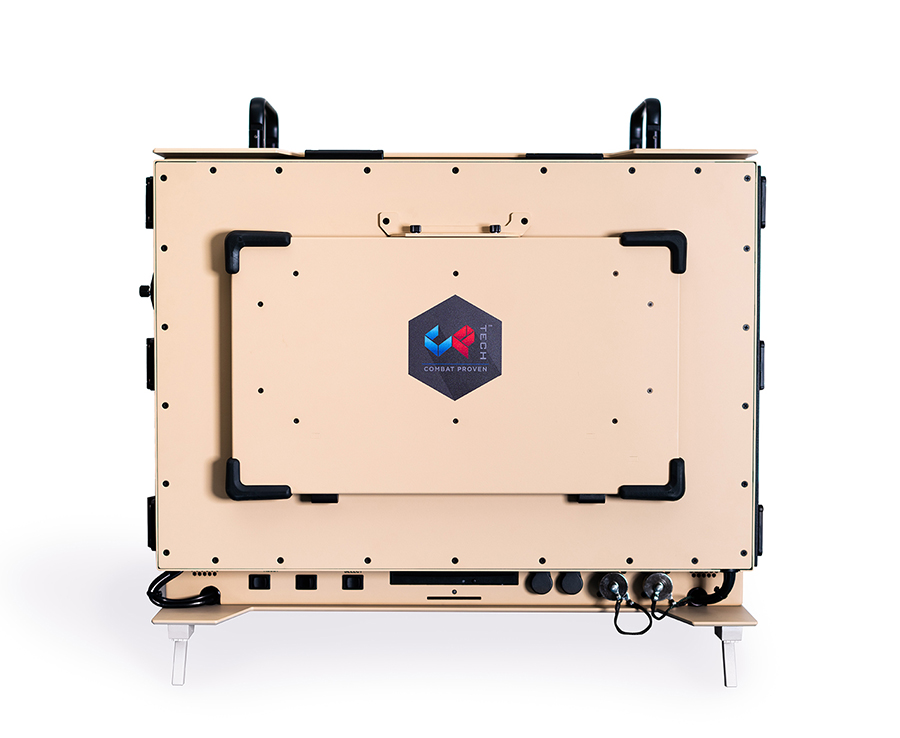Adding new high-frequency capabilities to military avionics applications
StoryApril 26, 2022

Radio frequency (RF) system manufacturers are creating advanced new system designs to accommodate extremely restricted space constraints and rising operating frequencies in military avionics applications.
The high-frequency radio frequency (RF) interconnections within military avionics systems are essential components. They must perform repeatably and reliably and meet reduced size, weight, and power (SWaP) requirements. At the same time, the RF coaxial cables and connectors operating in these critical avionics applications have complex electrical, mechanical, and environmental requirements and must remain accessible for maintenance or troubleshooting.
Additionally, fitting these systems into very tight spaces can allow unwanted coupling between RF transmission lines such as coaxial cables. High-density, modular multiport interconnect systems can create a smaller, modular connector assembly. Such multiport connector systems integrate multiple coaxial connector contacts into a single housing for much higher interconnection density than individual coaxial connections.
Frequency requirements are rising
Today’s military avionics technologies, including intelligence, radar, collision avoidance, electronic guidance, navigation, electronic warfare, and communications, require higher frequencies to provide increased bandwidth for a growing number of complex subsystems. Military avionics systems that once operated at frequencies of 12-18 GHz are now extending into the millimeter-wave (mmWave) frequency range of 30 GHz and beyond.
High-frequency RF interconnects for military avionics systems must retain their predecessors’ lightweight and small form factors to fit the high-density requirements of modern airframes and avionics systems. Driven by reduced SWaP equipment requirements, avionics systems are being mounted within smaller airframes and equipment housings, requiring coaxial assemblies to maintain reliable electrical and mechanical interconnections in tight spaces and under the most severe operating conditions.
Such a compact modular multiport connector system provides smaller, lighter interconnections to support denser, more tightly packed avionics systems. By mating a single multiport connector rather than multiple separate coaxial cable assemblies, the single connector interface provided by multiport shells reduces installation time, can ease system maintenance and testing, and increase reliability.
Expand capabilities within existing infrastructure
Military avionics interconnect systems operate in harsh environments on a wide range of airframes, enduring high-shock and vibration; corrosive effects of fuels, hydraulic fluids, and other chemicals; vacuum-like conditions created by high altitudes; and wide temperature ranges. These military avionics systems must handle these challenging environmental conditions while packing greater functionality into smaller spaces. This requires new coaxial cables and connectors to deliver high signal integrity and reliability.
Critical considerations for RF interconnects for challenging avionics and airframe applications include:
- Lightweight: Weight reduction is critical to increasing fuel efficiency. Today’s frequency band requirements are also becoming more complex, creating the need for additional lightweight, small, high-precision RF solutions.
- High density: The increasing number of antennas in military avionics applications creates the need for more electronic boxes and their connections. Furthermore, new high-density solutions are required as frequencies increase and interconnect dimensions decrease to accommodate shorter wavelengths.
- Shock and vibration: When a connector attached to an antenna vibrates, as it will in flight, microphonic noise can impact the connection. This can cause interference in the signal transmission and errors for the RF system. Minimizing space between the cables and connectors is necessary for the interconnect system to survive the high vibration. Furthermore, this microphonic noise wears out the plating on the pins. Use of spring-loaded interfaces can all but eliminate this for both electrical and mechanical improvements.
- Temperature: Higher altitudes, speeds, and frequencies result in higher temperature requirements, making materials considerations more complex.
- Maintenance and access: Antennas mounted on the aircraft’s exterior are routinely damaged, and expedited repair of those antennas is essential. However, antennas are often difficult to access in many avionics systems, making maintenance and replacement very complicated and time-consuming.
Multiport shells such as the M8 multiport connection system are constructed from lightweight aluminum and have advanced reach/ROHS-compliant conductive platings tested to the most severe corrosion resistance requirements. (ROHS is a directive on the restriction of the use of certain hazardous substances in electrical and electronic equipment.) The new contact designated M8M works up to 40 GHz and meets the needs of new high-frequency applications. The M8 multiport system has a a shielded structure to meet the electromagnetic interference and electromagnetic compatibility (EMI/EMC) requirements of densely packed military and civil avionics systems. The design also enables blind-mating interconnections. A spring-loaded design aims the parts for use in the harsh, high-vibration, environments typically found in military avionics applications. These parts are in service on a variety of U.S. and allied military aircraft from SIGINT/ELINT [signals intelligence/electronic intelligence] platforms to fast fighter jets. (Figure 1.)



[Figure 1 | Pictured is the M8 multiport connection system, which works up to 40 KHz and is intended for use in high-frequency applications. Times Microwave Systems photo.]
Advanced military avionics electronics applications must accommodate extremely restricted space constraints and rising operating frequencies. A military avionics wireless system’s range that once operated between 12 and 18 GHz is now extending into the millimeter-wave (mmWave) frequency range of 30 GHz and beyond. High-frequency RF interconnects for military avionics systems must retain their predecessors’ light weight and small form factors to fit the high-density requirements of modern airframes and avionics systems.
Ted Prema began his career at Times Microwave Systems in 1979 as a program manager and has held multiple management and technical sales responsibilities in the company’s commercial and mil-aero business segments over the years. He has years of experience in applications including engineering, RF assembly design engineering, and program management. He earned his BSEE from Rensselaer Polytechnic Institute and MBA from University of New Haven.
Times Microwave Systems • https://www.timesmicrowave.com/








